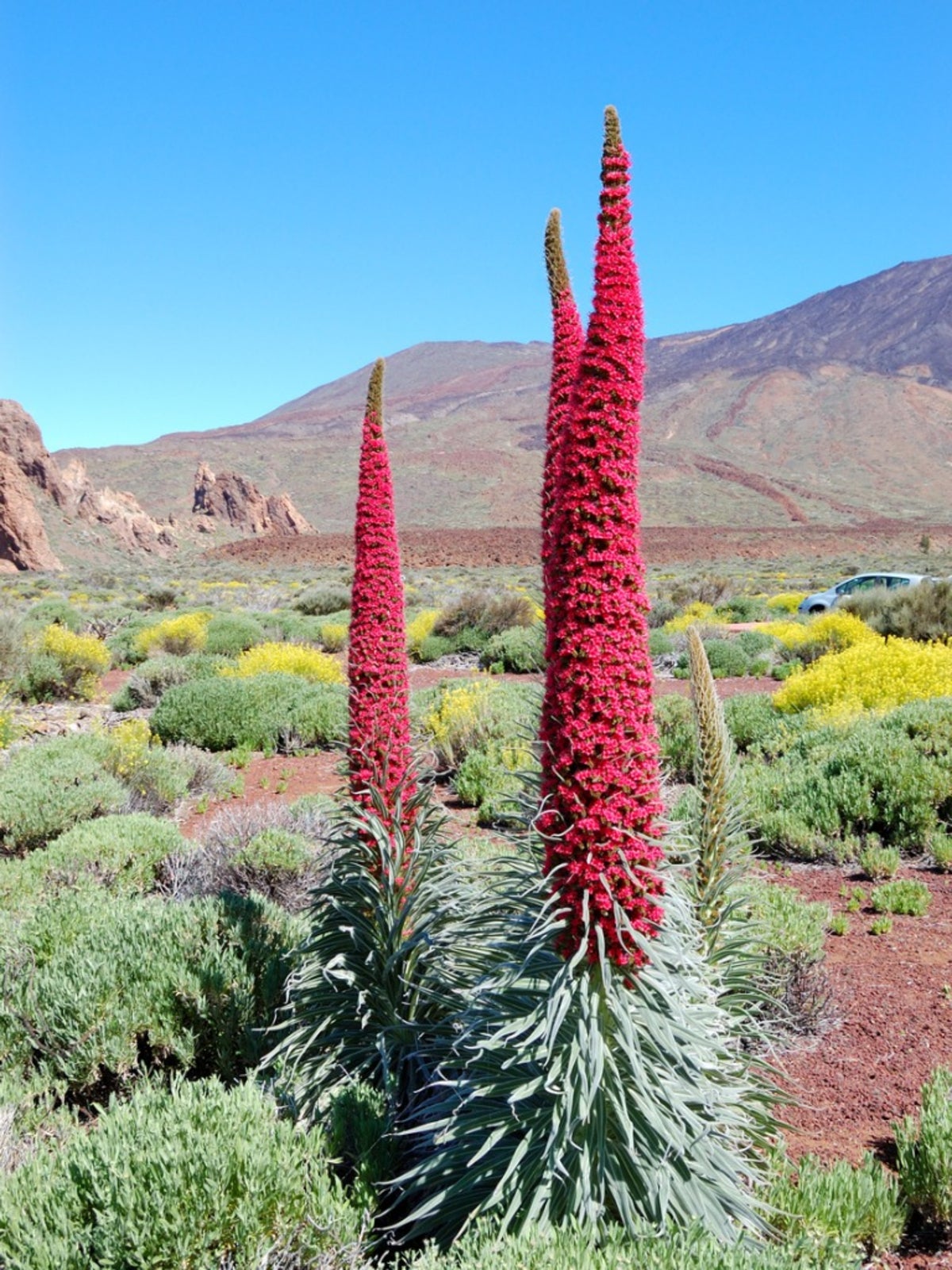Echium Tower of Jewels Flower: Tips For Growing Tower Of Jewels Plants


One flower that is sure to make jaws drop is the Echium wildpretii of tower of jewels flower. The amazing biennial can grow from 5 to 8 feet (1.5-2 m.) tall and is coated in the second year with brilliant pink flowers. If sheer size doesn't impress you, the silvery foliage and prominent anthers give the flowers and foliage a sparkle when sunlight hits them. Keep reading for information on tower of jewels plant care.
About Tower of Jewels Plants
This variety of Echium is native to the Canary Islands off the coast of Morocco. In this region the weather is mild with sunny, warm sea breezes in summer and cool, but not freezing, winters. Echium tower of jewels starts its first year of life as a grayish to silver rosette set low to the ground. In the second year, it produces a tall, thick flower spire with slightly ragged silver foliage below. The spire bursts with cerise to salmon pink-cupped flowers arranged in rows upon rows. Each of the nearly one hundred blooms have white anthers reaching out from the throat of the flower. These catch the light and along with the foliage, make the plant appear to be dipped in pixie dust. The plants are not terribly hardy, but a greenhouse is a great method for how to grow Echium. Temperate and warmer zone gardeners should try growing tower of jewels as a centerpiece for the exterior landscape. The Echium tower of jewels flower will give you years upon years of breathtaking beauty and architectural delight.
How to Grow Echium
The tower of jewels plant can survive temperatures below 20 degrees F. (-6 C.) if given some protection but is generally a warm to temperate weather specimen. Cooler areas should try to grow the plant in a solarium or greenhouse. The best soil is sandy to gritty, and a cactus soil works well for potted plants. Site the Echium tower of jewels in full sun with some protection from the wind. These plants are quite drought tolerant but superior tower of jewels care will include regular watering in summer to help produce a strong spire that doesn't tip over.
Echium Tower of Jewels Life Cycle
The smitten gardener doesn't have to worry in the second year when tower of jewels dies away. After the flowers are spent, hundreds of tiny seeds release to the ground below. Investigate carefully in spring and you will see many volunteer plants, starting the whole biennial cycle over anew. Growing tower of jewels seeds in colder zones may require sowing in flats indoors at least eight weeks before the date of the last frost. Lay the seeds on top of the soil, dusting with fine sand, and put the flat on a seed heat mat or other warm location. Keep the medium lightly moist until germination and then ensure the seedlings get bright sunlight and daily water.
Tower of Jewels Care
These plants take care of themselves for the most part. Watch for slug damage to rosettes in the first year and indoor plants may become prey to whitefly and red spider mites. Moderate water will help the plant grow strong and prevent it from tipping over. You may have to provide a stake if it gets too top heavy, especially in potted Echium. Don't cut back the flower until the seeds have had a chance to sow themselves. This plant will become the jewel of your garden and is both rewarding and low maintenance.
Gardening tips, videos, info and more delivered right to your inbox!
Sign up for the Gardening Know How newsletter today and receive a free copy of our e-book "How to Grow Delicious Tomatoes".

Bonnie Grant is a professional landscaper with a Certification in Urban Gardening. She has been gardening and writing for 15 years. A former professional chef, she has a passion for edible landscaping.
-
 Looking For Plants To Give You The Soft And Fuzzies? Try These 5 Fuzzy Leaf Plant Options
Looking For Plants To Give You The Soft And Fuzzies? Try These 5 Fuzzy Leaf Plant OptionsLovers of texture, drama, silver foliage and tactile plants will adore these special sensory garden additions. These fuzzy leaf plant options will leave you all aglow
By Susan Albert
-
 Get Ready For A Summer Of Hummers! Grow These Full Sun Hummingbird Plants and Flowers
Get Ready For A Summer Of Hummers! Grow These Full Sun Hummingbird Plants and FlowersIf you’re lucky enough to enjoy a sunny backyard, make sure you are maxing out on your pollinator opportunities and grow these full sun hummingbird plants and flowers
By Tonya Barnett